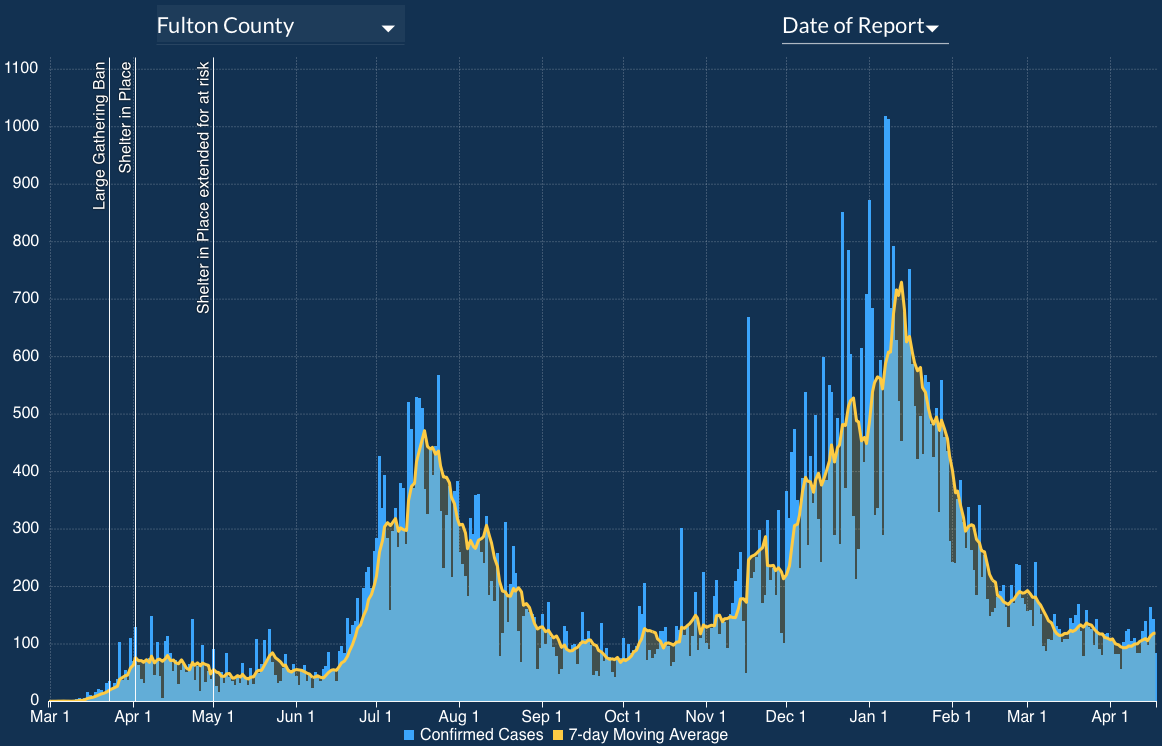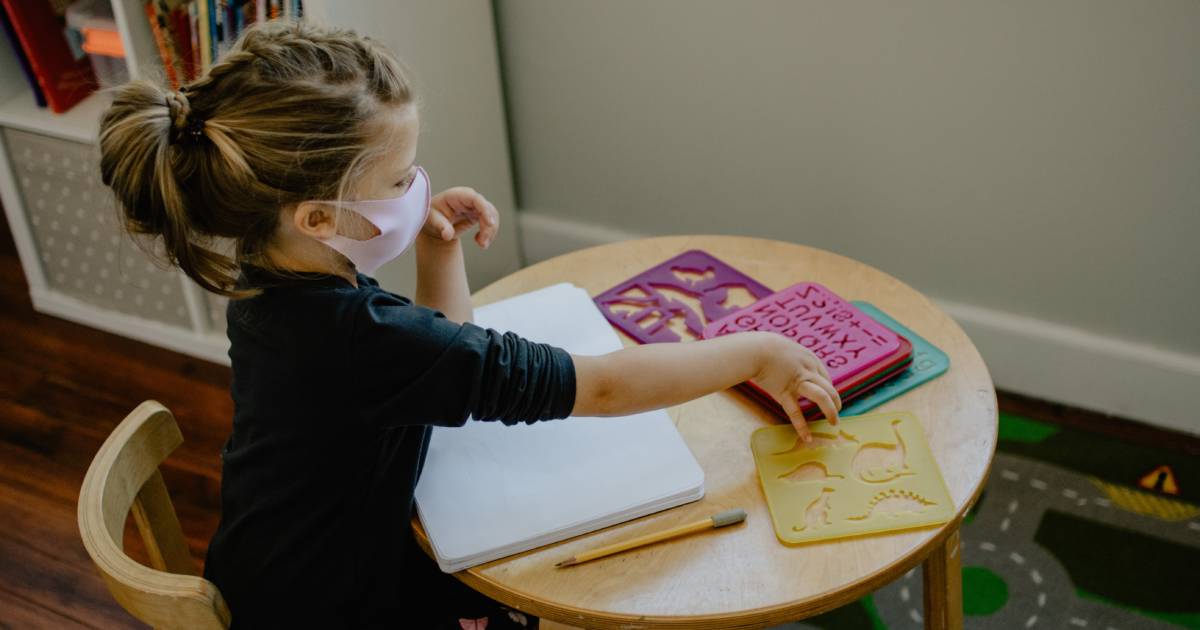With little notice to parents, and with zero transparency, schools remain the last bastion of America’s COVID-19 lockdown, causing random, and many times, unneeded havoc in families.
As we near the last months of the 2020-2021 school year, government data shows close to half of elementary and middle schools are open, clearing the rather low bar for the Biden administration’s goal of “a majority” of K-8 schools open for full-time, in-person classes by his 100th day in office.
Schools being open doesn’t translate to business as usual, however, since working parents have a sword of Damocles hanging over their heads. At any time, a school can declare a student quarantined for some number of days—a week, or more—based on their own contact tracing and COVID-19 protocols. A student determination of “high risk” based on a school’s rules sends the kid home, and for younger children that means parents need to take time off or find care for the student.
Depending on the school district, this even applies when the student in question has already been infected with COVID-19. It even applies when the teacher or the parents have been vaccinated. It even applies if parents order an antibody test for the student, depending solely on the school district’s own internal policies. How long after infection is a student considered “safe” not to get reinfected? By the CDC, and a single Kentucky study, reinfection is believed to be “rare.”
The study in question found five recurrent COVID-19 patients: all women ranging in age from 67 to 99 years, after 90 days, and all were living in a “skilled nursing facility” (a nursing home). An NIH paper published in December 2020 declares that “Minimal information on the “sustained positivity” of SARS-CoV-2 is available in the pediatric population. No pediatric data on reinfections are available.”
The resulting study on the available household data including children found that in the small number of patients retested for “sustained positivity,” most were asymptomatic, overwhelmingly female, mostly Black or hispanic, with an average age of 9.9 years. The study reported the CDC’s guidelines (link to current guidelines here):
On October 19, 2020, CDC revised its quarantine/isolation guidelines for those who get re-exposed to SARS-CoV-2 after recovering from COVID-19 in the past. The current recommendations are not to-quarantine/isolate patients who have recovered from past COVID-19 if re-exposed to the virus.
The CDC currently recommends:
For children and infants, the data pertaining to the risk of reinfection within 90 days following laboratory-confirmed diagnosis are extremely limited. However, in the context of a pandemic, children and infants should be managed as recommended for adults above. CDC will continue to monitor closely the evolving science for information that would warrant reconsideration of these recommendations for this population.
Do schools need to follow the CDC advice? No. At least not in the case of the Fulton County, Georgia school district.
A student who was previously infected over 90 days ago, and is found, by a system of contact tracing developed during the heat of the pandemic, when the R0 value (transmissibility per infected person) was above 2.0, to be “high risk” will be sent home for 10 days, no ifs, ands, buts, and no information on who was infected. HIPAA regulations and all, you know. It’s perfectly understandable that schools would want to follow federal healthcare privacy regulations. But not knowing who in your child’s class tested positive (except by the parent grapevine) puts a big dent in trying to deal with the situation, never mind verify the school’s version of events.
There’s a ripple effect in the “high risk” designation. This designation presumes that the student being quarantined is at high risk to contract COVID-19 due to over 15 minutes of close contact with someone who is known to be infected, with symptoms. For families with working parents, at this point in the pandemic, where it’s only optional for businesses to offer Emergency Pandemic Sick Leave (the FFCRA has expired), and Emergency Family Medical Leave Act (E-FMLA) paid time off is no longer available, the quarantine could be a severe financial burden. Some parents could lose their jobs—especially, and ironically—those who work in education.
Finding families willing to “quarantine” together is also a domino effect. If a relative or friend has, say, a doctor appointment or procedure scheduled, no medical provider is going to see them if they’ve have contact with a “high risk” student. Essentially, one school’s decision that a student who has already been infected, should be kept away, while other students can continue to attend, can supersede all the vaccinations, precautions, studies, and CDC guidelines. The school districts get to play God.
Since children under 16 are not eligible for any existing COVID-19 vaccine, schools are free to continue their own lockdown programs for as long as they like. Every 90 days, if a child suffers symptoms, or tests positive, or has parents who refuse to get vaccinated (even if they have a solid reason, like past allergic reactions), your child could be at risk of being sent home “high risk” for 10 days of quarantine, regardless if they’ve been infected before, regardless of their own symptoms, and regardless of your own vaccination status.
These lockdowns can continue indefinitely, and knowing how schools operate, probably will.
With all other aspects of life falling into the “vaccinated” or “immune” versus “at risk” categories, schools are the one place where all the kids are deemed to be potential spreaders, and there’s no immediate plan to fix it.
Other countries realize that kids, up until now, have been a weak target for COVID-19, both in spread, and in hospitalizations. France, where the virus is currently raging due to massive resistance to vaccination, kept their schools open through the worst of the spikes. Brazil is struggling with a COVID-19 variant that seems to target babies and children. But Brazil has gone full-Trumpian in its non-response to the pandemic.
So far, right-wing President Jair Bolsonaro, who has opposed lockdowns, has held large events where he often does not wear a mask. He has only recently embraced vaccines as a possible solution.
Experts in Brazil say low coronavirus testing rates, lack of contact tracing efforts and a shortage of vaccines have contributed to rises in cases and deaths. These factors have also increased the risk of exposure and potential death among more Brazilian babies and children.
Those shortcomings are not evident in the U.S., even in places like Georgia and Mississippi, where resistance to getting vaccinated is fairly high. The New York Times correlates this with Trump voters, and they’re not wrong.
But Fulton County is not Trump country, and is not even in the top third of Georgia counties by confirmed cases per 100K. The latest 7-day moving average shows just 118.7 confirmed cases county-wide.

A few of those cases might be in schools, and at least one is in a Fulton school where a student reported symptoms. Don’t get me wrong, I don’t favor letting the virus just spread among kids so they can bring it home to their unvaccinated parents or friends. But when we’re dealing with proper science, does it make sense to designate a kid who had the infection six months ago, living in a home with two vaccinated parents, into quarantine because of some rules and contact tracing the parents aren’t allowed to question due to “privacy concerns?”
If this was a work environment, the CDC wouldn’t recommend doing that if the adult was asymptomatic. But for kids, there’s no end to the lockdown, and therefore, for parents, there’s no certainty it will ever end.
I know these things because, full disclosure, it’s happening to me. Our kid, who had COVID-19 along with the rest of the family, in October, is being told to stay home. The kid who we know tested positive, due to the parent grapevine, wasn’t even in the classroom with our kid on the two days of in-person school held last week. But the school says their contact tracing is accurate (it’s not). The school says 90 days is the maximum immunity for children in their procedures, without any kind of definitive scientific evidence to back it up.
The “high risk” designation and quarantine goes a lot further than one kid—it affects families, work, relatives, and doctors. It is a scarlet letter. We went through this hell last October, and now we know there’s no end to it. Not now, and possibly, not ever.
Not unless something changes. That’s why I dissent and resist it. This is not the same America dealing with COVID-19 as a year ago, with an R0 of over 2.0. We aren’t trying to flatten the curve today. This isn’t the Fulton County of January 13, with 729 new cases in a 7-day moving average. This is no longer about flattening the curve. It’s about moving the goalposts to five-nines of reliability (99.9999% reliability). The chance of getting MRSA from an operating room isn’t zero either, but surgeons still operate.
Vaccines only offer 80-90% protection. Not everyone will get the vaccine. Kids can’t get it yet. Even with these “holes” in herd immunity, kids are not big community spreaders. We know this; it’s science. But schools are retaining the right to override all that, damn the science, and continue lockdowns forever, on their own terms.
It needs to stop. We have to get them to change the system, and stop playing God, or next year, it will continue, and more families and lives will be needlessly disrupted.
Follow Steve on Twitter @stevengberman.
The First TV contributor network is a place for vibrant thought and ideas. Opinions expressed here do not necessarily reflect those of The First or The First TV. We want to foster dialogue, create conversation, and debate ideas. See something you like or don’t like? Reach out to the author or to us at ideas@thefirsttv.com.

